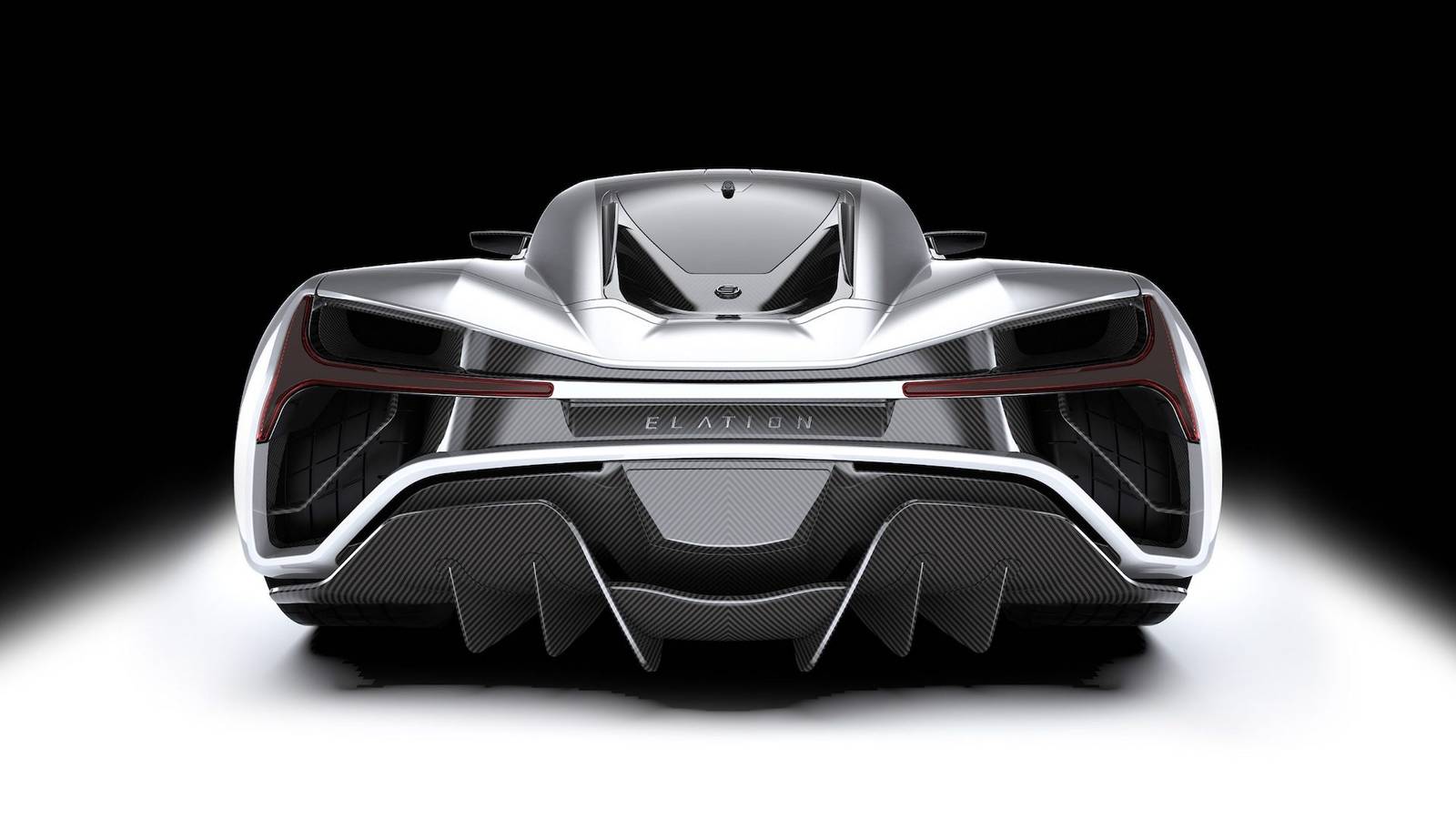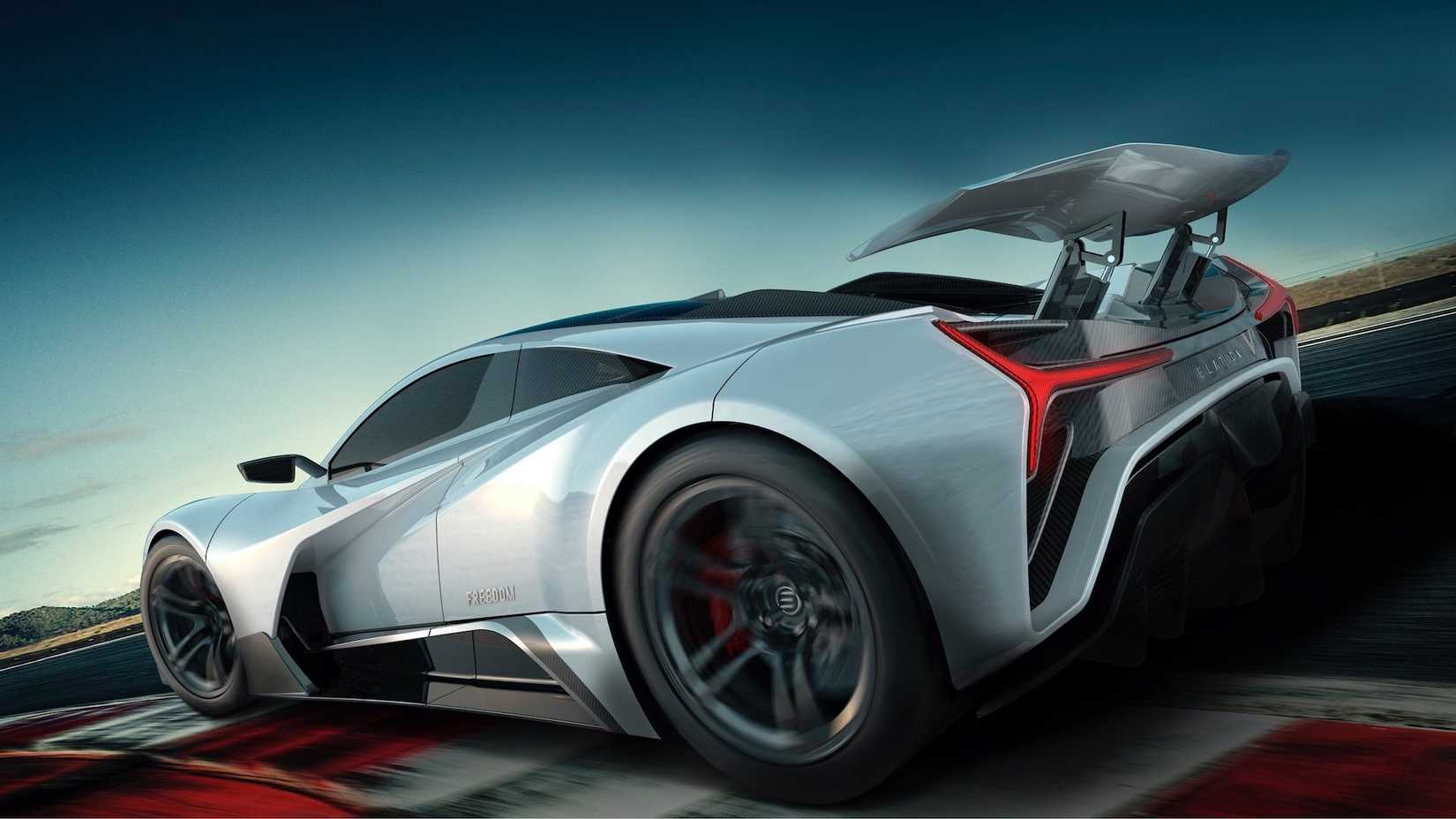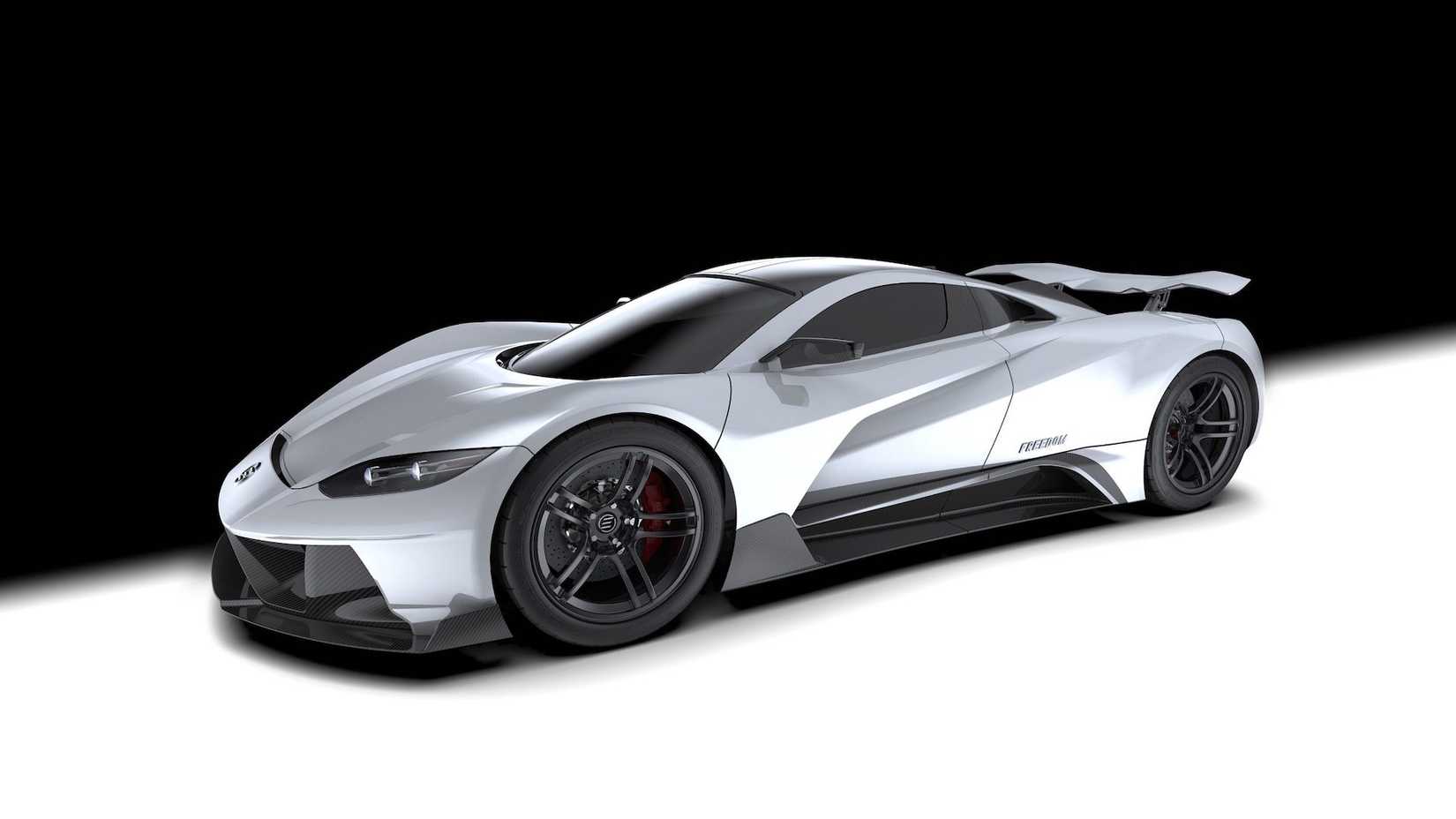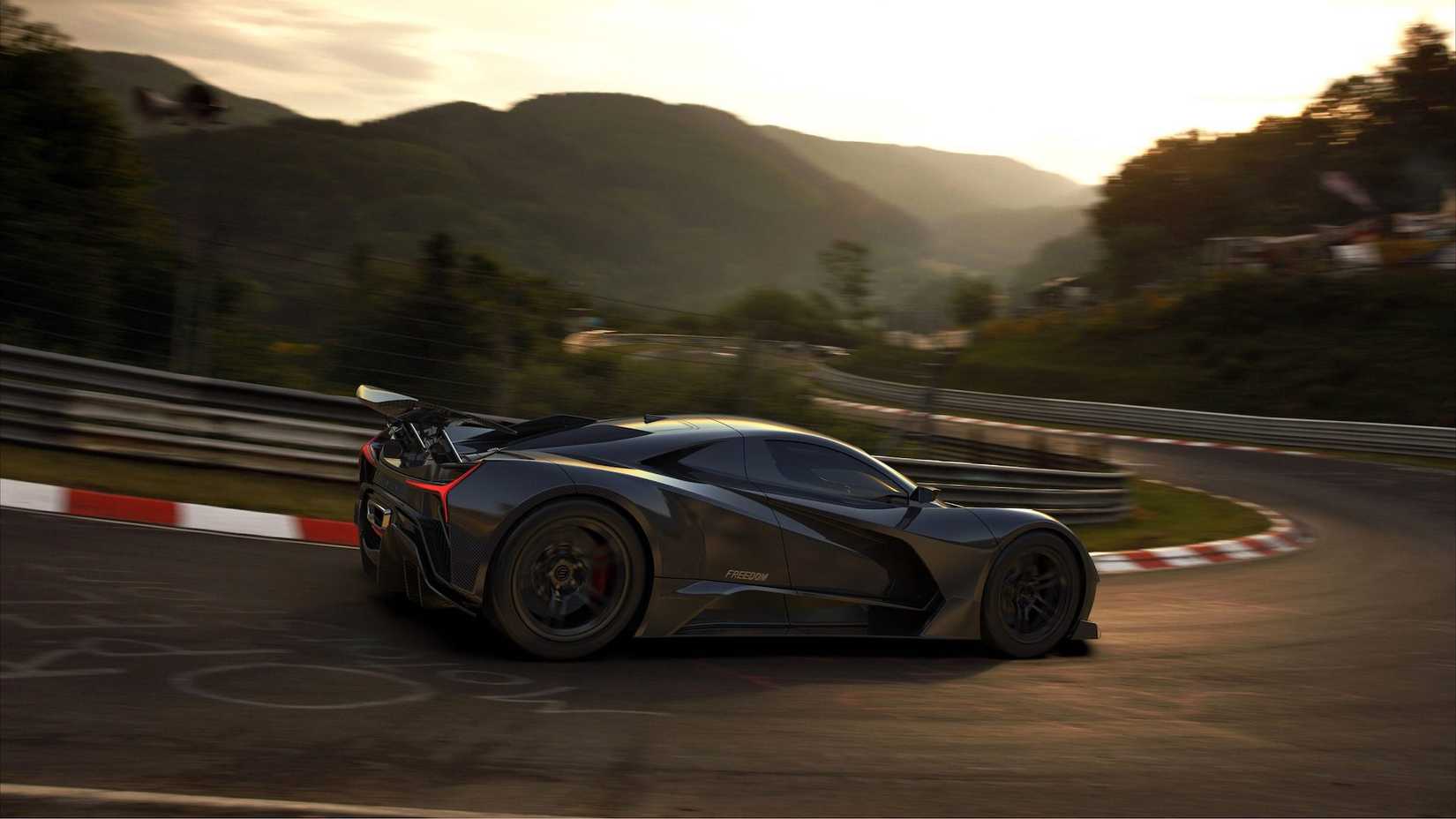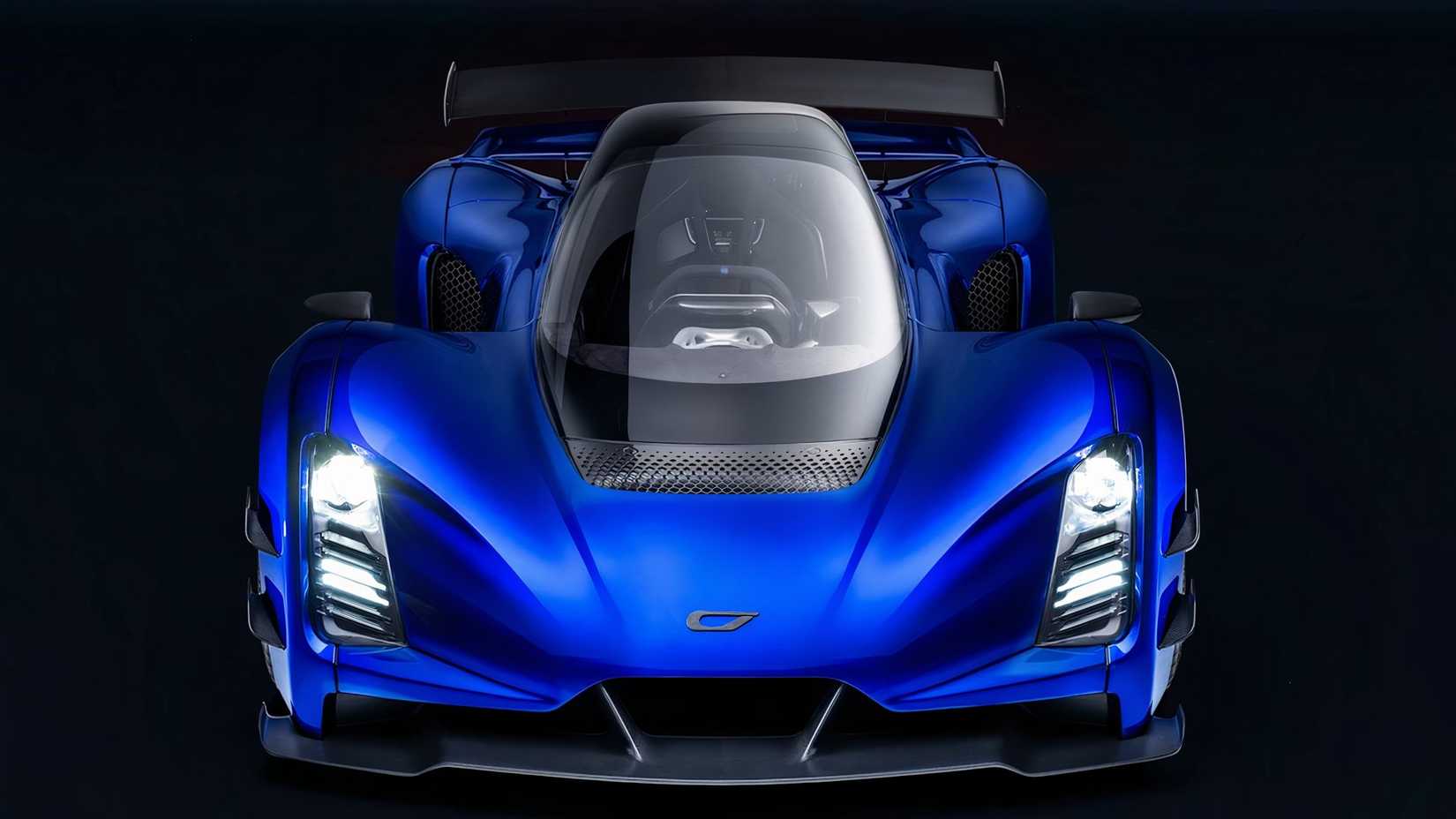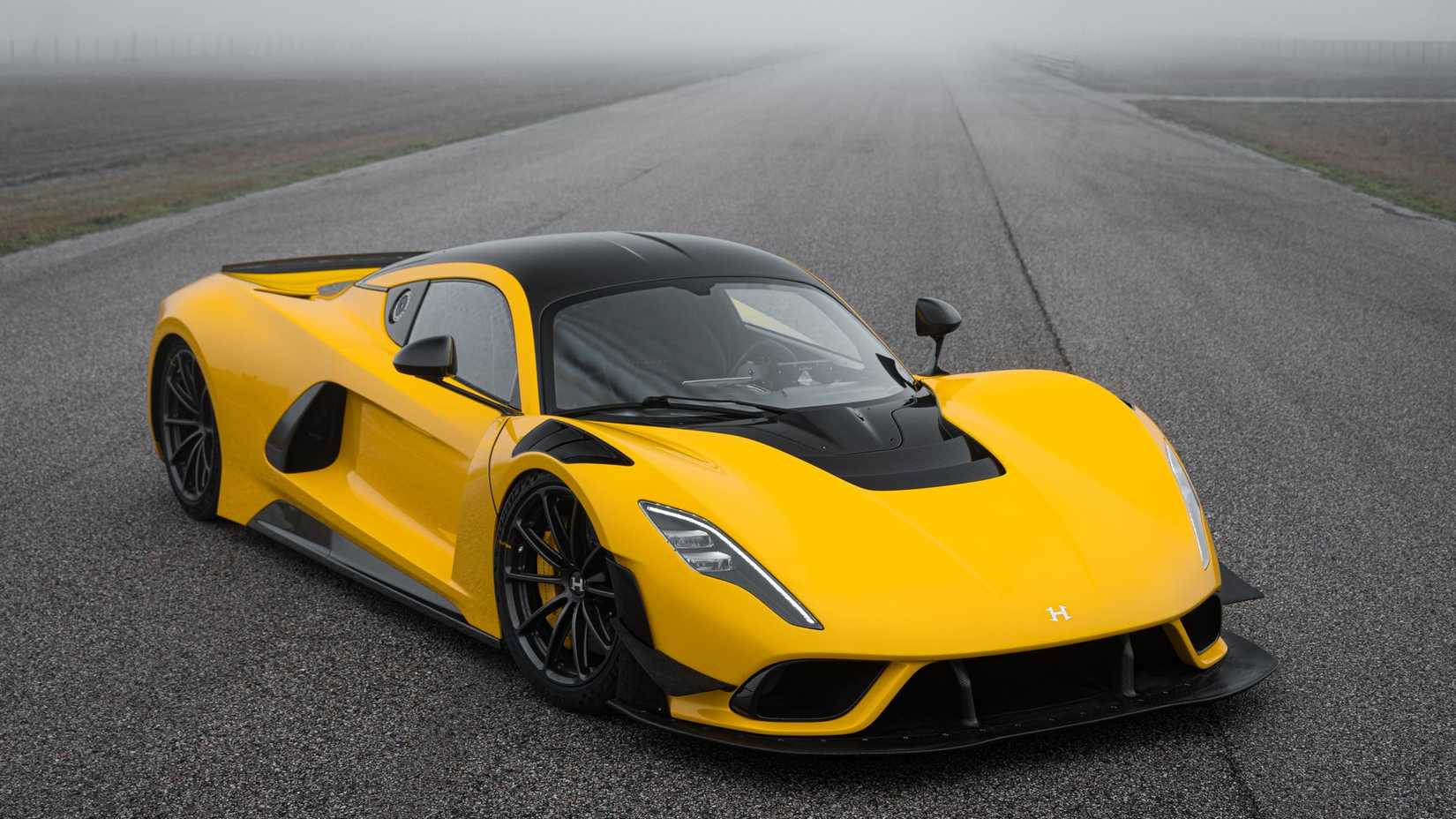The Rimac Nevera holds more records than any other model in the electric hypercar segment, along with the more track-focused Rimac Nevera R. The electric hypercar segment as a whole is a niche market, populated by a handful of models each boasting more than 1,000 horsepower and equally eye-watering price tags.
However, at one point, a small, relatively unheard-of American automotive company based in California introduced an electric hypercar that had the potential to rival the Rimac Nevera. That high-performance prospect was called the Elation Freedom, and it is remembered as America’s would-be electric hypercar, which had great promise. However, today, we have yet to see the promise of an American-made electric hypercar realized.
Have You Ever Heard Of The Elation Freedom?
The Elation Freedom debuted in 2020 as the company’s first offering to the world. However, before delving into what was a promising electric hypercar, let’s briefly discuss the company that built it, Elation Motors. It was a start-up automotive brand that was based in Silicon Valley, California, and was founded by two Argentine businessmen, Carlos Satulovsky and Mauro Saravia.
This company intended to echo the innovative and forward-thinking attitude associated with Silicon Valley, which was on full display in their Elation Freedom hypercar. The team behind this hypercar had experience from time spent in Formula One and the hallowed 24 Hours of Le Mans, alongside several other important European racing divisions.
“By dovetailing the worlds of high-performance motorsport with luxury, we have developed a purely emotional driving experience. The goal of the Elation Freedom is to deliver just that.” – Carlos Satulovsky.
When it debuted, the Elation Freedom was distinguished as a bona fide electric hypercar that followed the same formula as some of its contemporaries: a sleek, aggressively styled hypercar with more than 1,000 hp. Based on what we saw, it had the potential to rival the Rimac Nevera.
It Had Potential
Elation Freedom
Rimac Nevera
Electric motors
3–4 electric motors
4 electric motors
Horsepower
1,414–1,903 hp
1,813 hp
Torque
1,062–1,877 lb-ft
1,726 lb-ft
0-60 mph
1.8 seconds
1.74 seconds
Top speed
260 mph
258 mph
The Elation Freedom was founded on a lightweight carbon fiber monocoque chassis, which, in its base trim, was powered by three liquid-cooled electric motors that drew power from a 100-kW-hour T-shaped battery integrated into the chassis as a structural component, helping to lower its center of gravity. Impressively, the Elation Freedom’s chassis had a torsional rigidity that was claimed to be 65,000 Newton meters, which is an impressive claim considering that the Hennessey Venom F5 has a claimed chassis rigidity of 52,000 Newton meters.
However, customers were given the option of upgrading the battery to a 120-kW-hour battery that increased its driving range to 400 miles on a single charge. In its most potent form, that being one equipped with a 100kWh battery and three electric motors, it was capable of generating roughly one megawatt of power, which is approximately equal to 1,414 hp, but in its most potent form, that being an example equipped with four electric motors powered by a 120 kWh battery, was capable of producing 1,903 hp.
However, while its power output was at the forefront of its attraction, it was being developed to be docile enough to cruise on a highway, with one of the company’s founders stating that the electric motors could be disengaged and powered under one electric motor, which would still be capable of producing 500 hp to propel its 3,600-lb physique.
In contrast, with its full power on tap, the Elation Freedom was claimed to be able to reach 60 mph from a standstill in less than two seconds. However, for customers who wanted the thrum of a combustion engine in the Elation Freedom, the California-based automotive startup offered a 5.2-liter V10 engine that offered 750 hp, with a slower 0–60 mph than the all-electric offshoot, claimed to be roughly 2.5 seconds in this configuration, with a top speed limited to 240 mph.
Not only was the Elation Freedom touted as a power-laden hypercar, it was also a technological spectacle. Its electric motors relied on an electro-hydraulic torque vectoring system. Additionally, the front axle was equipped with a single-speed gearbox, and, in contrast, the rear axle was kitted with a two-speed gearbox. Supporting its lightweight physique was a double-wishbone suspension system, a creation of Elation Technologies, a subsidiary of Elation Motors Company.
Comparing on-paper specs, the Elation Freedom had the makings of a potential rival to the Rimac Nevera. However, this might not be the case when compared to the Nevera’s more athletic sibling, which shattered multiple records in a single day. Beyond the Croatian brand’s offering, the Elation Freedom also stood shoulder-to-shoulder with other notable names in the electric hypercar segment, like the Pininfarina B95, Lotus Evija, and the Aspark Owl. It’s hard to overstate how promising the Elation freedom seemed, but ultimately, it would never be fully realized.
And Then, Nothing
With its eye-watering performance figures came an equally eye-watering price tag, which was claimed to start at $2 million, nearly enough to afford a brand-new McLaren W1 today. In comparison, the most expensive configuration was estimated to cost close to $3 million. Elation Motors stated that it planned to produce only 25 examples of the Elation Freedom, with each iteration of the American hypercar requiring approximately 4,000 hours of build time. Ultimately – and as you may have already guessed – the Elation Freedom was never fully realized. We attempted to contact Elation Motors using the contact details listed on the Elation Hypercars website. However, we never received a response.
When the world was introduced to the digital renderings of the Elation Freedom, the company had already started prototype testing and, at the same time, was building facilities to accommodate the production of the Elation Freedom. The full-fat, road-ready Elation Freedom was expected to be unveiled at the 2022 Geneva Motor Show. However, this was during the height of the Covid-19 pandemic that forced the now-defunct auto show to go on a hiatus, which would eventually lead to the complete shutdown of the long-standing automotive show.
Today, it seems that the Elation Motors company has become defunct, and communication regarding the Elation Freedom has dried up, with no confirmation that the car ever entered the production stage. As it stands, there is no indication that this American-made electric hypercar will ever see the light of day. However, while it seems that we’ve lost out on what appeared to be one of the most powerful American-made cars ever and arguably the highest-ranking all-electric offering from the States, we’ve made do without it.
America Doesn’t Need An Electric Hypercar to Take The Fight To Rimac
Czinger
21C
Hennessey Venom
F5 Evolution
Chevrolet Corvette
ZR1X
Engine
2.9-liter twin-turbo-
charged hybrid V8
6.6-liter twin-turbo-
charged V8
5.5-liter twin-turbo-
charged hybrid V8
Power
1,250 hp
2,031 hp @ 8,000 rpm
1,064–1,250 hp
Torque
Unconfirmed
1,445 lb-ft @ 5,200 rpm
828– 973 lb-ft
0-60 mph
1.9 seconds
Top speed
219 mph
300 mph (est)
> 233 mph (est)
Sure, we never saw the Elation Freedom arrive on time. In the time since its introduction in 2020, America has seen the debut of a handful of combustion-powered hypercars that have the capability of standing on par with some of the leading names in the electric hypercar segment. On one side of the spectrum, we have the Czinger 21C, powered by a petite yet mighty twin-turbocharged V8 engine assisted by a hybrid drive system that allows the 3D-printed American hypercar to reach 60 mph from a standstill in nearly the same time as the Rimac Nevera. Alongside blistering speed comes impressive track performance that is the result of its lightweight configuration.
On the rowdier side of the spectrum is the most powerful combustion-powered American car ever, the Hennessey Venom F5 Evolution. This iteration of Hennessey’s potent hypercar is the pinnacle of the American automaker’s already impressive Venom F5, which has been enhanced by the introduction of improved engine components, including two of the largest turbochargers, revised pistons, and larger high-flow fuel injectors. Aside from go-faster hardware, this version of the Hennessey Venom F5 is supported by a new adaptive suspension system and a revision of its aerodynamic package to improve its overall performance.
The latest addition to America’s small hypercar stable, which started with an incredible one-hit wonder, is the Chevrolet Corvette ZR1X, which is the culmination of all the innovations introduced in the C8 generation that have elevated the Corvette name into the hypercar segment. At its core, the Chevrolet Corvette ZR1X is powered by the most powerful engine offered in a road-going Corvette that works in tandem with a hybrid drive system borrowed from the Chevrolet Corvette E-Ray to achieve a total power output that is within arm’s reach of the most prolific combustion-powered hypercars available today, which is capable of tussling with some of the members of the electric hypercar segment.
Sources: Elation Hypercars, Hennessey Performance, Czinger, Chevrolet
